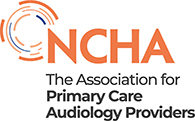References and endnotes
1
System issues in audiology can often be traced back to a lack of priority afforded to audiology services - e.g. policymakers not acting on evidence about barriers to care, failing to act on data which indicated significant capacity issues, overlooking hearing loss is a long-term condition, and waiting list problems will compound unless action is taken at an early stage. This lack of forward planning is also at the heart of multiple but avoidable system failures. For examples, see:
a) Johnson, Grover and Martin, 1984. A survey of NHS hearing aid services. RNID. London RNID.
b) RNID, 1985-86. Hearing Impairment in Elderly People. London: RNID
c) RNID, Age Concern and the British Association of the Hard of Hearing, 1986. Conference Papers presented at the Breaking the Sound Barrier event.
d) See Watson, C and Crowther, J. 1989. Provision of hearing aids: Does specialist assessment cause delay? BMJ. Vol. 299 and the response, Browning et al. 1989 Provision of hearing aids. BMJ: British Medical Journal, 299 (6700), pp. 678-9.
e) RNID, 1988. Hearing aids the case for change. London: RNID.
f) RNID. 1989. Hearing Aids - The Developing Debate. The RNID's Refined Views.
g) RNID, 1999. Waiting to hear? A report on waiting times for hearing tests, RNID, London.
h) Audit Commission, 2000. Fully equipped: the provision of equipment to older or disabled people by the NHS and social services in England and Wales, Audit Commission, London
i) Jayarajan, V. and Rangan, S. 2000. Evaluation of hearing-aid provision in adults. Journal of Audiological Medicine.
j) RNID, 2001. Audiology in Crisis. London: RNID.
k) RNID, 2001, Audiology in crisis, still waiting to hear. RNID, London.
l) Audit Commission, 2002. Access to Care, How long patients wait for ENT and audiology services.
m) Health Committee, House of Commons, 2007. Audiology Services, HC393 Fifth Report of Session 2006-07.
n) Department of Health, 2007. Written evidence to the Health Committee, House of Commons, 2007. Audiology Services, HC393 Fifth Report of Session 2006-07.
o) Alex Murdock, Brian Lamb, 2009. The impact of the RNID on auditory services in England: Borrowing lawnmowers and the price of salt, Social Enterprise Journal, Vol. 5: 2, pp.141 - 153.
p) Matthews, L. 2011. Seen but not heard: People with hearing loss are not receiving the support they need. London, RNID.
q) Action on Hearing Loss, 2011. Hearing Matters, London.
r) Healthwatch, 2014. Hearing aids, it's in the drawer. Healthwatch, Stockport.
https://www.healthwatchstockport.co.uk/report/2014-03-24/healthwatchstockport-its-drawer-report
s) Lowe, C, 2015. Under Pressure: NHS Audiology Across the UK. London, Action on Hearing Loss.
t) RNID, 2022. Our manifesto for the Northern Ireland Assembly election, https:// rnid.org.uk/about-us/rnid-in-northern-ireland/our-manifesto-for-the-northernireland-assembly-election/ indicates two-year wait to be fitted for hearing aids.
u) Independent Review of Audiology Services in Scotland, 2023. https://www.gov.
scot/publications/independent-review-audiology-services-scotland/documents/
v) NHS England, 2023. Quality Improvement in Paediatric Hearing Services: recommended actions for immediate implementation, https://www.england. nhs.uk/long-read/quality-improvement-in-paediatric-hearing-servicesrecommended-actions-for-immediate-implementation/
w) RNID, 2024. The crisis of NHS ear wax removal in England, https://rnid.org.uk/wpcontent/uploads/2024/01/RNID_ear-wax-report_January-2024.pdf
x) Audiology Worldnews, 2024. Specsavers urges Welsh Government to improve access to community audiology services, https://audiology-worldnews.com/ awareness/4993-specsavers-urges-welsh-government-to-improve-access-tocommunity-audiology-services
2
There have been repeated calls to deliver more audiology services out of hospital and closer to home to meet growing need. With multiple reports also setting out the benefits of acting on ear and hearing problems in this way. Examples are included below.
a) RNID, 1988. Hearing aids the case for change. London: RNID.
b) RNID, 1989. Hearing Aids - The Developing Debate. The RNID's Refined View.
c) RNID, 1999. Waiting to hear? A report on waiting times for hearing tests.
d) Reeves, D.J. et al., 2000. Community provision of hearing aids and related audiology services, Health technology assessment (Winchester, England), vol. 4, no. 4.
e) RNID, 2001. Waiting to Hear and RNID, 2001. Audiology in Crisis. Still waiting to hear.
f) Department of Health, 2007. Improving Access to Audiology Services in England.
g) Health Committee, 2007, Audiology Services. Fifth Report of Session 2006-07.
h) Department of Health, 2009. Best Practice Guidance. Hearing Services for Older People.
i) NHS Improvement, 2010. Audiology Improvement programme. Pushing the boundaries. Evidence to support the delivery of good practice in audiology.
j) Department of Health, 2012. Any Qualified Provider Adult Hearing Services Implementation Packs. London: Department of Health.
k) Department of Health, 2009. Best Practice Guidance. Hearing Services for Older People.
l) Department of Health, 2011. Liberating the NHS: Greater choice and control. Equality analysis. Extending patient choice of provider.
m) Department of Health, 2012. Any Qualified Provider Adult Hearing Services Implementation Packs. London: Department of Health.
n) Monitor 2015. NHS adult hearing services in England: exploring how choice is working for patients.
o) Department of Health and NHS England, 2015. Action Plan on Hearing Loss.
p) BBC, 2015, NI audiology treatment high street pilot planned. https://www.bbc.co.uk/news/uk-northern-ireland-34771228
q) NICE, 2018. NG98 Hearing loss in adults: assessment and management, recommends wax management services should be made available closer to home in primary care
r) SNP, 2021, Scotland's Future, Scotland's Choice.
s) WHO, 2023. World Report on Hearing, https://www.who.int/publications/i/item/9789240020481
t) Welsh Government, 2021, Earwax management in primary and community care
pathway https://www.gov.wales/sites/default/files/publications/2020-10/ear-waxmanagement-primary-and-community-care-pathway-whc2020014.pdf
u) NHS, 2022. Next steps for integrating primary care: Fuller Stocktake report.
v) House of Lords, 2023. Integration of Primary and Community Care Committee, 2023, Dr Claire Fuller evidence, https://committees.parliament.uk/ oralevidence/12886/pdf/
w) NHS England, 2023. 2023/24 priorities and operational planning guidance.
3
House of Lords, 2023, Integration of Primary and Community Care Committee, 2023, https://committees.parliament.uk/oralevidence/12886/pdf/, Claire Fuller, previously CEO at Surrey Heartlands ICB, now National Primary Care Medical Director at NHS England.
4
See NHS positions statements below:
a) Open access audiology for all adults, 2021. https://www.the-ncha.com/members/influence/position-statements/more/321/page/1/audiology-the-fifth-primary-care-service/
b) Time for action - improving access to NHS ear and hearing care, 2021, https://www.the-ncha.com/members/influence/position-statements/more/302/page/1/time-for-action-improving-access-to-nhs-ear-and-hearing-care/
c) Audiology - the fifth primary care service 2022, https://www.the-ncha.com/members/influence/position-statements/more/321/page/1/audiology-the-fifth-primary-care-service/
5
NHS, 2023, 2023/24 priorities and operational planning guidance https://www. england.nhs.uk/wp-content/uploads/2022/12/PRN00021-23-24-priorities-andoperational-planning-guidance-v1.1.pdf
6
See SNP manifesto, Scotland's future.
- "We will bolster community audiology provision to help free up capacity in our acute sector. Our ambition is to put community audiology services on par with our free community eye care services..."
7
See Senedd Cymru (Welsh Parliament) Y Cyfarfod Llawn (Plenary), 7 February 2024, https://record.senedd.wales/Plenary/13711#C564905
8
ENT UK, 2024, Waiting times in ENT- a new year update from GIRFT https://www.entuk.org/news_and_events/news/303/waiting_times_in_ent_a_new_year_update_ from_grift/
9
Lack of access to timely hearing care and the health systems not planning to meet needs has been documented since the 1980s. Recent examples of challenges in accessing care are referenced below.
a) Department of Health and Social Care and NHS England, 2015. Action Plan on Hearing Loss, https://www.hearinglossanddeafnessalliance.com/downloads/ managed/Resources/act-plan-hearing-loss-upd.pdf
b) NICE, 2018. Hearing Loss, Hearing loss in adults: assessment and management, NG98, full guideline https://www.nice.org.uk/guidance/ng98/evidence/fullguideline-pdf-4852693117
c) NHS England, the Local Government Association, the Association of Directors of Public Health, Public Health England et al. 2019. Joint Strategic Needs Assessment Guidance. https://www.england.nhs.uk/wp-content/uploads/2017/09/joint-strategic-needs-assessment-guidance-jul19.pdf
d) RNID, 2022. Our manifesto for the Northern Ireland Assembly election, https:// rnid.org.uk/about-us/rnid-in-northern-ireland/our-manifesto-for-the-northernireland-assembly-election/ indicates two-year wait to be fitted for hearing aids.
e) RNID, 2024, The crisis of NHS ear wax removal in England, https://rnid.org.uk/wpcontent/uploads/2024/01/RNID_ear-wax-report_January-2024.pdf
f) Audiology WorldNews, 2024, Specsavers urges Welsh Government to improve access to community audiology services, https://audiology-worldnews.com/ awareness/4993-specsavers-urges-welsh-government-to-improve-access-tocommunity-audiology-services
g) See Senedd Cymru (Welsh Parliament) Y Cyfarfod Llawn (Plenary), 7 February 2024, https://record.senedd.wales/Plenary/13711#C564905
h) ENT UK, 2024, Waiting times in ENT- a new year update from GIRFT https://www.entuk.org/news_and_events/news/303/waiting_times_in_ent_a_new_year_ update_from_grift/
10
a) Department of Health and Social Care and NHS England, 2015. Action Plan on Hearing Loss, https://www.hearinglossanddeafnessalliance.com/downloads/managed/Resources/act-plan-hearing-loss-upd.pdf
b) NICE, 2018, Hearing Loss, Hearing loss in adults: assessment and management, NG98, full guideline https://www.nice.org.uk/guidance/ng98/evidence/fullguideline-pdf-4852693117
c) NHS England, the Local Government Association, the Association of Directors of Public Health, Public Health England et al. 2019, Joint Strategic Needs Assessment Guidance. https://www.england.nhs.uk/wp-content/uploads/2017/09/jointstrategic-needs-assessment-guidance-jul19.pdf
d) WHO, 2023, World Report on Hearing, https://www.who.int/publications/i/item/9789240020481
11
a) NICE, 2018, Hearing Loss, Hearing loss in adults: assessment and management, NG98, full guideline https://www.nice.org.uk/guidance/ng98/evidence/fullguideline-pdf-4852693117
b) WHO, 2023, World Report on Hearing, https://www.who.int/publications/i/item/9789240020481
c) Chief Medical Officer's annual report 2023: health in an ageing society https://assets.publishing.service.gov.uk/media/65562ff2d03a8d000d07faa6/chiefmedical-officers-annual-report-2023-web-accessible.pdf
12
NICE, 2018, Hearing Loss, Hearing loss in adults: assessment and management, NG98, full guideline https://www.nice.org.uk/guidance/ng98/evidence/fullguidelinepdf-4852693117
13
The notes below explain how benefits have been computed.
General: These are conservative estimates as they are based on data in England and just consider the adult population. England represents 84% of the UK adult population. If similar savings are found in the rest of the UK, the data would be 2.4 million GP visits, 297,000 ENT appointments and £47m in additional savings.
Economic savings: We assessed HRG, reference cost and PSSRU data for procedures that are reported by secondary care and GP surgeries. We also reviewed data from running scenario analysis in the YHEC model provided later in the report. In summary, we estimate savings of £74m on GPs, £12.5m on ENT, and more than £35m on audiology per year, £121m. However, as hearing loss is often a long-term condition, many of these savings compound over time, as demonstrated in the YHEC model, hence savings are likely to exceed £100m when tracking a cohort of patients on a long-term care pathway.
GP savings at a glance: We searched the literature and NHS datasets and estimated that a conservative 3.5m GP appointments in England are for ear and hearing related problems (wax management 1.9m, tinnitus 750,000, hearing problems 850,000). We assume 60% of these visits could be seen by, and more effectively triaged by, primary care audiology in the future, based on NICE guidelines. Based on PSSRU costs per GP visit, and assuming each person uses the minimum amount of allocated GP time, the opportunity for cost savings would be £74m per year. However, it is more likely that primary care audiology would, by helping reduce the burden of disease associated with unsupported ear and hearing problems, save GPs much more time than this, as we know from work done by patient groups that people with earwax and hearing repeatedly visit GP surgeries for support and information to be repeated. ENT savings: We assessed NHS datasets, reviewing HRG codes to estimate the number of visits that occur for wax management each year. We also wrote to NHS England to ask if it had better data sources than the sources that we were depending on - it did not. We used a conservative 350,000 episodes and estimate, based on discussion with ENT/GP specialists, that 80% of current de-waxing procedures could be performed in primary care audiology settings.
We also undertook more detailed work into each of these areas and commissioned YHEC to critique our inhouse estimates.
Therefore, based on the available literature, we present conservative working assumptions. We would be happy to talk through our working with policymakers and researchers - please email [email protected].
14 See endnote 2
15 See endnote 1
16
Rivett, G. National Health Service History. Ear, nose and throat (ENT) surgery Online version. https://www.nuffieldtrust.org.uk/chapter/1948-1957-establishing-the-national-health-service
17
WHO, Childhood hearing loss, strategies for prevention and care https://www.who.int/docs/default-source/imported2/childhood-hearing-loss--strategies-for-prevention-and-care.pdf?sfvrsn=cbbbb3cc_0
18
a) NICE, 2018. Hearing Loss, Hearing loss in adults: assessment and management, NG98, full guideline https://www.nice.org.uk/guidance/ng98/evidence/fullguideline-pdf-4852693117
b) NHS England, the Local Government Association, the Association of Directors of Public Health, Public Health England et al. 2019 Joint Strategic Needs Assessment Guidance. https://www.england.nhs.uk/wp-content/uploads/2017/09/joint-strategic-needs-assessment-guidance-jul19.pdf
c) While noise induced hearing loss (NIH) remains a challenge, with the HSE estimating more than two million people in Great Britain are exposed to excessive noise at work and claims for NIH remain the second most common reason for employers' liability insurance claims for occupational health, the overall incidence and prevalence of NIH is low relative to age-related hearing loss, tinnitus and impacted wax.
19
Preventable sight-threatening eye conditions are generally more prevalent in the UK population than treatable/preventable conditions that might cause permanent hearing loss. See:
a) Purola, P.K.M., Nättinen, J.E., Ojamo, M.U.I. et al. Prevalence and 11-year incidence of common eye diseases and their relation to health-related quality of life, mental health, and visual impairment. Qual Life Res 30, 2311-2327 (2021). https://doi. org/10.1007/s11136-021-02817-1
b) National Academies of Sciences, Engineering, and Medicine. 2016. Hearing Health Care for Adults: Priorities for Improving Access and Affordability. Washington, DC: The National Academies Press. https://doi.org/10.17226/23446
c) Zapala D.A et al. 2010. Safety of audiology direct access for medicare patients complaining of impaired hearing. J Am Acad Audiol. 2010 Jun;21(6):365-79. doi: 10.3766/jaaa.21.6.2
d) NCHA, causes of hearing loss, https://www.the-ncha.com/commissioners/hearing-care-in-the-uk/causes-of-hearing-loss/
20
WHO, 2023, World Report on Hearing, https://www.who.int/publications/i/item/9789240020481
21

 Prevalence is based on Mid-Year Population Estimates, UK, June 2021, published December 2022. https://www.ons.gov.uk/peoplepopulationandcommunity/populationandmigration/populationestimates/datasets/ estimated based on hearing loss (%) of ≥25 dBHL. For adults, we use the following data from Davis, 1995. Hearing in adults B5124-4, B5124-5, B5124-6, B5124-7, B5124-8, B5124-9 and Table 8.1 p.822. Each country is then rounded to the nearest 1,000. Please note this document was published in 2024 and there are more older people in the population compared to 2021, therefore the data in the map is likely to underestimate the total number of people with hearing loss because it uses 2021 population data from the ONS. It is likely there are now closer to 12m people in the UK with a hearing loss. Please note, we are currently updating our hearing map -https://www.the-ncha.com/hearing-map/. Once the data are revised for 2024 we will update this infographic in the report to reflect the latest regional data.
Prevalence is based on Mid-Year Population Estimates, UK, June 2021, published December 2022. https://www.ons.gov.uk/peoplepopulationandcommunity/populationandmigration/populationestimates/datasets/ estimated based on hearing loss (%) of ≥25 dBHL. For adults, we use the following data from Davis, 1995. Hearing in adults B5124-4, B5124-5, B5124-6, B5124-7, B5124-8, B5124-9 and Table 8.1 p.822. Each country is then rounded to the nearest 1,000. Please note this document was published in 2024 and there are more older people in the population compared to 2021, therefore the data in the map is likely to underestimate the total number of people with hearing loss because it uses 2021 population data from the ONS. It is likely there are now closer to 12m people in the UK with a hearing loss. Please note, we are currently updating our hearing map -https://www.the-ncha.com/hearing-map/. Once the data are revised for 2024 we will update this infographic in the report to reflect the latest regional data.
22
RNID, 2024. Prevalence of deafness and hearing loss https://rnid.org.uk/get-involved/ research-and-policy/facts-and-figures/prevalence-of-deafness-and-hearing-loss/
23
Global Burden of Disease Study Collaborators, 2016.. Global, regional, and national incidence, prevalence, and years lived with disability for 328 diseases and injuries in 195 countries, 1990-2016: a systematic analysis for the Global Burden of Disease Study 2016. Lancet. 2017; 390:1211-59. https://www.thelancet.com/action/ showPdf?pii=S0140-6736%2817%2932154-2
24
NICE, 2018. Hearing Loss, Hearing loss in adults: assessment and management, NG98, full guideline https://www.nice.org.uk/guidance/ng98/evidence/full-guidelinepdf-4852693117. At £3,976 per QALY for lifetime treatment, or £4,591 per QALY for the first 10 years of treatment. Well below the CE threshold of c £20,000 per QALY.
25
For examples, see endnotes 1 (t, u, w, x)
26
NICE, 2018, Hearing loss Hearing loss in adults: assessment and management NICE guideline NG98 Appendices A - S June 2018 Appendix N. Cost-effectiveness analysis: early versus delayed management of hearing loss, https://www.nice.org.uk/guidance/ ng98/evidence/appendices-as-pdf-4852693118
27
a) NHS England, 2017. What works: Hearing loss and employment. https://www. england.nhs.uk/wp-content/uploads/2017/09/hearing-loss-what-works-guideemployment.pdf
b) NHS England, the Local Government Association, the Association of Directors of Public Health, Public Health England et al. 2019, Joint Strategic Needs Assessment Guidance. https://www.england.nhs.uk/wp-content/uploads/2017/09/joint-strategic-needs-assessment-guidance-jul19.pdf
c) NICE, 2018, Hearing Loss, Hearing loss in adults: assessment and management, NG98, full guideline. https://www.nice.org.uk/guidance/ng98/evidence/fullguideline-pdf-4852693117
d) The Lancet Commission, 2020. Dementia prevention, intervention, and care: 2020 report of the Lancet Commission. https://www.thelancet.com/article/S0140-6736(20)30367-6/fulltext
e) WHO, 2021. World Report on Hearing. https://iris.who.int/bitstream/handle/10665/339913/9789240020481-eng.pdf?sequence=1
f) Alzheimer's Research UK, 2024. Hearing aids may prevent or delay the onset and progression of dementia, study suggests. https://www.alzheimersresearchuk. org/hearing-aids-may-prevent-or-delay-the-onset-and-progression-of-dementiastudy-suggests/
28
a) Ferguson M.A., Kitterick P.T., Chong L.Y., Edmondson-Jones M., Barker F., Hoare D.J. Hearing aids for mild to moderate hearing loss in adults. Cochrane Database of Systematic Reviews 2017, Issue 9. Art. No.: CD012023. DOI: 10.1002/14651858. CD012023.pub2. Accessed 21 November 2023.
b) NICE, 2018. Hearing Loss, Hearing loss in adults: assessment and management, NG98, full guideline. https://www.nice.org.uk/guidance/ng98/evidence/fullguideline-pdf-4852693117
c) WHO, 2021. World Report on Hearing. https://www.who.int/teams/noncommunicable-diseases/sensory-functions-disability-and-rehabilitation/ highlighting-priorities-for-ear-and-hearing-care
29
This recommendation has been made in the past by WHO, the NHS and Age UK.
a) World Health Organization, 2002. Active Ageing: A Policy Framework. Madrid: World Health Organisation.
b) NHS and Age UK, 2015. Evidence base for the practical guide to healthy ageing and NHS England and Age UK, 2015. A practical guide to healthy ageing. p.14
c) NHS, What works: Hearing loss and healthy ageing, https://www.hearinglossanddeafnessalliance.com/downloads/managed/Resources/hearingloss-what-works-guide-healthy-ageing.pdf
30
There have been multiple system failures over time because of a lack of priority afforded to audiology, and especially adult hearing loss. Typical issues have included not securing sufficient capacity to meet predictable need, resulting in long waiting lists and gaps in follow-up care and support. See endnote1 for a list of reports.
31
We set out below how the data has been derived.
Our members provide 30% of NHS hearing care and more than 72% of self-funded adult hearing care across the UK. They have more than 2,250 primary care sites across the UK and more than 3,700 practice staff. Between them, they also offer domiciliary services across the UK. If our members also had 73% of primary care locations, this would make the total number of primary care locations 3,130. However, we provide a conservative estimate by only providing member locations. For the workforce, there are more than 4,300 HCPC-registered hearing aid dispensers (audiologists) and we estimate there are about 600 hearing care assistants working mainly in primary care settings - a total of 4,900. However, many HCPC registrants work part time. Therefore, our conservative estimate is that there are more than 4,000 audiologists and assistant audiologists working across primary care audiology in the UK. Please note, as set out in Primary care audiology, we are currently undertaking workforce analysis. This will provide us with a new FTE estimator which we will then be able to apply to HCPC registrant data and track workforce overtime.
32
Monitor, 2015 Could choice benefit your patients?
https://assets.publishing.service.gov.uk/media/5a81b9dfed915d74e33ffc1e/13-10-2015_ AQP_slide_deck_resource_FINAL.pptx accessed 26 Feb. 24
33
Monitor, 2015. NHS adult hearing services in England: exploring how choice is working for patients, https://www.gov.uk/government/publications/nhs-adult-hearingservices-in-england-exploring-how-choice-is-working-for-patients
34
NHS England, 2023/24 priorities and operational planning guidance. P9 https://www.england.nhs.uk/wp-content/uploads/2022/12/PRN00021-23-24priorities-and-operational-planning-guidance-v1.1.pdf
35
Readers wishing to learn more about this, can email us at healthpolicy@the-ncha. com. Alternatively, they can follow the following steps:
- Read Monitor 2015. NHS adult hearing services in England: exploring how choice is working for patients, https://assets.publishing.service.gov.uk/ media/5a7ffb45ed915d74e622bc58/Adult_hearing_services_-_Monitor_s_report. pdf
- Review section 8.4.1 page 35 and Appendix 9 page 70 in NHS England's Commissioning Services for People with hearing loss, https://www.england.nhs.uk/wp-content/uploads/2016/07/HLCF.pdf
- Review relevant reference cost dataset for applicable currencies
- This will show that services commissioned in primary and community care settings are often priced at less than the average reference cost (exc any adjustments for MFF).
36
If taking account of MFF, the savings are likely to succeed 20-25% See page 34 second paragraph and footnote 118 in Monitor 2015. NHS adult hearing services in England: exploring how choice is working for patients, https://assets.publishing. service.gov.uk/media/5a7ffb45ed915d74e622bc58/Adult_hearing_services_Monitor_s_report.pdf
37
NCHA member data. Anonymised aggregate data of a sample of 2,000 records.
38
King's Fund, 2024, Making care closer to home a reality: Refocusing the system to primary and community care, https://www.kingsfund.org.uk/insight-and-analysis/ reports/making-care-closer-home-reality
39
For example, the evidence shows that demand for NHS primary eye care services is growing on average at 1.9% per year, driven by people aged 60 and older as they are at higher risk of vision and eye problems (see endnote 19), but people are going blind due to delays in accessing the hospital eye service. Therefore, more care needs to be shifted to primary care for the benefit of patients and the wider NHS. Likewise, demand for primary care audiology will be very predictable and easy to plan for, because the main reason for people seeking help will be age-related hearing loss followed by support for de-waxing services. Local JSNAs can easily estimate this need and develop a robust forecast of likely demand. Also, in same way ophthalmology is under pressure, ENT UK and GIRFT have made clear (see various sections in primary care audiology for supporting evidence) that ENT services are under unsustainable pressure and more needs to be done in primary care settings.
40
NHS England webinar, Experience of implementing audiology pathway with direct referral and patient-initiated follow-up. Presenter Chris Brockbank, Clinical and professional lead for adult audiology, 17 October 2023
41
Estimates of hearing loss of ≥25dB HL in children are not readily available. We therefore use:
a) M Bond et al. 2009. The effectiveness and cost-effectiveness of cochlear implants for severe to profound deafness in children and adults: a systematic review and economic model. HTA 2009.DOI: 10.3310/hta13440
b) CDC international collection of prevalence of hearing loss, https://www.cdc.gov/ncbddd/hearingloss/documents/International-Hearing-Loss-Data-Table.pdf accessed 26 Feb. 2024
c) NDCS estimates of 3 in 1,000
d) UK National Screening Committee, http://legacy.screening.nhs.uk/hearing-newborn
42
UK National Screening Committee, Hearing (newborn) https://view-health-screeningrecommendations.service.gov.uk/hearing-newborn/
43
Wood S.A., Sutton G.J., Davis A.C. Performance and characteristics of the Newborn
Hearing Screening Programme in England: The first seven years. Int J Audiol. 2015 Jun;54(6):353-8. doi: 10.3109/14992027.2014.989548. Epub 2015 Mar 13. PMID: 25766652; PMCID: PMC4487563.
44
In addition to reports shared in endnote one, note the following:
a) Department of Health, 2009. Transforming Services for Children with Hearing Difficulty and their Families. A Good Practice Guide; NDCS, 2012.
b) Listen UP!: Sally A Wood, Graham J Sutton & Adrian C Davis (2015) Performance and characteristics of the Newborn Hearing Screening Programme in England:
The first seven years, International Journal of Audiology, 54:6, 353-358, DOI: 10.3109/14992027.2014.989548
c) Independent Review of Audiology Services in Scotland, 2023, https://www. gov.scot/binaries/content/documents/govscot/publications/independentreport/2023/08/independent-review-audiology-services-scotland/documents/ independent-review-audiology-services-scotland/independent-review-audiologyservices-scotland/govscot%3Adocument/independent-review-audiologyservices-scotland.pdf
d) NHS England, 2023, Paediatric Hearing Services Improvement Programme: system recommendations for immediate action, https://www.england.nhs. uk/long-read/paediatric-hearing-services-improvement-programme-systemrecommendations-for-immediate-action/
45
See endnotes 44 c and d.
46
Department of Health, 2009. Transforming Services for Children with Hearing Difficulty and their Families. A Good Practice Guide advised:
- "To maintain competence and continually update skills in assessment and habilitation, individual audiologists need to assess 20-30 new cases per year to ensure best practice and improve expertise."
47
Department of Health, 2009. Transforming Services for Children with Hearing Difficulty and their Families. A Good Practice Guide, noted:
- An estimated 30% to 40% of children with a hearing impairment also have additional health and/or development needs
- Children with PCHI should have an individual care plan (ICP), that the MDT should appointed co-ordinator and a key worker for each case and the ICP should encourage "holistic discussion of needs, agreement of priorities and regular reviews of support provided, will be developed and documented within three months of diagnosis of PCHI, by the MDT and the parents for each child with a significant hearing loss".
48
RNID, 1988, The case for change set out how NHS adult hearing care should be delivered out of hospital and this would mean all "children are seen in a specialist ENT department. Number of referrals is greatly reduced. More consultant time is free for those who need their skills. Medical staff are supported by more specialised audiology staff who provide clinical support services".
49
a) NICE, 2023, Otitis media with effusion, https://cks.nice.org.uk/topics/otitis-mediawith-effusion/
b) NHS, 2016/17. Schedule 2 - The Services. https://www.england.nhs.uk/wp-content/ uploads/2016/07/P37-CYP-Service-Specification-Template.pdf, accessed 8th January 2024.
50
Chief Medical Officer's annual report 2023: health in an ageing society, https://assets. publishing.service.gov.uk/media/65562ff2d03a8d000d07faa6/chief-medical-officersannual-report-2023-web-accessible.pdf
51
a) Ferguson M.A., Kitterick P.T., Chong L.Y., Edmondson-Jones M., Barker F., Hoare D.J. Hearing aids for mild to moderate hearing loss in adults. Cochrane Database of Systematic Reviews 2017, Issue 9. Art. No.: CD012023. DOI: 10.1002/14651858.CD012023.pub2. Accessed 6 February 2024.
b) NICE, 2018. Hearing loss in adults: assessment and management, p. 200, 201 and 259. https://www.nice.org.uk/guidance/ng98/evidence/full-guideline-pdf-4852693117, accessed 8 January 2024.
52
a) NICE, 2018. Hearing loss in adults: assessment and management guideline, p.2021. https://www.nice.org.uk/guidance/ng98/resources/hearing-loss-in-adultsassessment-and-management-pdf-1837761878725.
b) NHS. NHS adult hearing services in England: exploring how choice is working for patients, p.14 and 16. https://assets.publishing.service.gov.uk/ media/5a7ffb45ed915d74e622bc58/Adult_hearing_services_-_Monitor_s_report.pdf, accessed 8 January 2024.
c) WHO, 2021. World Report on Hearing, p. 90-91, 103-104. https://www.who. int/teams/noncommunicable-diseases/sensory-functions-disability-andrehabilitation/highlighting-priorities-for-ear-and-hearing-care, accessed 8 January 2024.
53
An emerging body of evidence shows that hearing aids may help reduce the risk of dementia and hearing aid use should be encouraged in older adults with an unsupported hearing loss.
a) The Lancet Commission, 2020. Dementia prevention, intervention, and care: 2020 report of the Lancet Commission. https://www.thelancet.com/action/ showPdf?pii=S0140-6736%2820%2930367-6
b) John Hopkins, 2023, Hearing aids may slow dementia onset, https://publichealth. jhu.edu/2023/hearing-aids-may-slow-dementia-onset
c) Alzheimer's Society, Hearing loss and the risk of dementia, https://www.alzheimers.org.uk/about-dementia/managing-the-risk-of-dementia/reduce-your-risk-of-dementia/hearing-loss
d) Alzheimer's Research UK, 2024, Hearing aids may prevent or delay the onset and progression of dementia study suggests, https://www.alzheimersresearchuk. org/news/hearing-aids-may-prevent-or-delay-the-onset-and-progression-ofdementia-study-suggests/
e) Cantuaria M.L., Pedersen E.R., Waldorff F.B, et al. Hearing Loss, Hearing Aid Use, and Risk of Dementia in Older Adults. JAMA Otolaryngol Head Neck Surg. 2024;150(2):157-164. doi:10.1001/jamaoto.2023.3509
54
Hearing aids. BIHIMA. Market Data. https://www.bihima.com/market-data/. Analysis of data between 2014 and 2023 (excluding the pandemic year 2021-22), show that in Q2 of 2016, 16% of hearing aids were supplied to self-funded services and that this has increased over time, with 24% of aids provided supplied to self-funded services by Q2 2023
55
a) Uptake of hearing aid data is taken from EHIMA Euro Trak data, https://www.ehima.com/wp-content/uploads/2023/01/EuroTrak-UK_2022_Report.pdf
b) The YHEC report and other evidence in primary care audiology demonstrates cost efficiencies.
56
a) Hearing aid data is for the UK, taken from Hearing aids. BIHIMA. Market Data. https://www.bihima.com/market-data/ for 2022, 1,974,521 rounded to the nearest 250, 1,974,500.
b) Other devices are based on NHS England HRG data, which reports this data, and cross-checking these with available guidance, or commissioning guidelines. With England representing 84% of the population, the UK total is estimated as follows:
- Bone anchored hearing aids (DEV05) 1,876 in England. Reference cost activity checked against NHS England guidance, which estimated between 1,413 and 1,766 would be fitted in England each year, https://www.england.nhs.uk/ wp-content/uploads/2013/04/d09-p-a.pdf. Estimated UK 2,233. Rounded to nearest 250, 2,250.
- There were 6,368 bilateral cochlear implants (CA41Z) and 7,764 unilateral cochlear implants (CA42Z) reported in reference cost activity in 2021/22. This would total 20,500 cochlear implants in England. Based on clinical guidance and the prevalence of people eligible to cochlear implants, this is unlikely, and might be due to a coding issue. We therefore use data provided by The British Cochlear Implant Group, https://www.bcig.org.uk/_userfiles/pages/ files/audit/111223_bcig_2023_ci_data.pdf. Its 2022/23 data shows 1,395 people received an implant in the UK. 987 were unilateral, and 408 were bilateral. This would make it a total of 1803, rounded to 1,800.
- NHS England estimates six people a year would go on to have an ABI. https:// www.england.nhs.uk/wp-content/uploads/2018/06/service-specificationauditory-brainstem-implant.pdf. Which would be about seven people in the UK.
57
NICE, 2023, Earwax, https://cks.nice.org.uk/topics/earwax/background-information/ complications/
58
NICE, 2018. Hearing loss in adults: assessment and management guideline, p. 19-20. https://www.nice.org.uk/guidance/ng98/resources/hearing-loss-in-adultsassessment-and-management-pdf-1837761878725, accessed 8 January 2024.
59
Reviewing the literature and how NICE and others derive that 2.3m patients will seek an intervention for impacted earwax each year in the UK, we found updating data for the current population would provide a range of 1.9m to 3.3m visits per year for earwax. However, we opted to use the widely used figure of 2.3m people per year as this is used by NICE, the RNID and RCGP et al. We then estimated the total for each country based on 84% of the UK population living in England, 8% in Scotland, 5% in Wales and 3% in Northern Ireland. The data were then rounded to the nearest 500.
60
Alice-Azania Jarvis, 2022, The Times, Health, I had my ears 'vacuumed' - it's so satisfying https://www.thetimes.co.uk/article/i-had-my-ears-vacuumed-its-assatisfying-as-it-sounds-3s9j96wdb
61
In April 2020, the RCGP and BMA guidance on workload prioritisation during the pandemic, classified wax management as a low priority and advised the use of olive oil to soften earwax and went on to recommend GPs consider arranging wax management with a different provider - e.g. 'a high street provider'.
62
Member survey covering 2022 reported 311,208 earwax appointments (if a patient had both ears treated at one visit this was counted as one appointment not two).
63
RNID, 2024, Blocked ears, blocked access
64
We reviewed prices online of a range of providers and weighted this for estimated activity. We estimate £55 is the average price for access to a primary care de-waxing service.
In contrast, NHS care might require visiting a GP £33.19 (PSSRU 2020) for a referral to ENT. Reference cost data show that clearance of external auditory canal in an adult cost £178 as an outpatient procedure and an ENT outpatient appointment cost £155 on average; both uncorrected for MFF, so represent the minimum average cost to the NHS (NHS England reference cost 2021/22). If an ENT doctor sees a patient as an outpatient appointment and then rebooks them to remove wax, this could cost the NHS £333 without correcting for MFF.
However, assuming the NHS only has the cost of a short GP visit (£33.19) and the lowest average cost to see ENT (£155, excluding any correction for MFF), removing wax would cost £188. This would be 242% more expensive than offering this as a primary care audiology service.
It is also important to note that Munro et al. cite a survey that suggests that adults with earwax required 1-4 NHS visits before attending a dewaxing clinic, so the cost of existing models of NHS care is likely to be >300% more costly than a primary care audiology de-wax service.
65
NHS England, the Local Government Association, the Association of Directors of Public Health, Public Health England et al. 2019. Joint Strategic Needs Assessment Guidance. https://www.england.nhs.uk/wp-content/uploads/2017/09/joint-strategicneeds-assessment-guidance-jul19.pdf
66
NICE, Tinnitus: assessment and management. NG155. https://www.nice.org.uk/ guidance/ng155
67
Stockdale, D., McFerran, D., Brazier, P. et al. An economic evaluation of the healthcare cost of tinnitus management in the UK. BMC Health Serv Res 17, 577 (2017). https://bmchealthservres.biomedcentral.com/articles/10.1186/s12913-017-2527-2
68
El-Shunnar S.K., Hoare D.J., Smith S., et al. Primary care for tinnitus: practice and opinion among GPs in England. J Eval Clin Pract. 2011;17:684-92. Record that their survey found that on average, 37% of tinnitus patients were referred, most to ENT (82%) or audiology (12%), or to GP colleagues (5%). 82% of 37%, means 30% of all referrals went to ENT.
This is greater than one would expect if GPs had access to diagnostic tests - e.g. the NICE committee on tinnitus management noted: "People present with tinnitus without realising that they have a hearing loss. Identifying a problem in the hearing system can be helpful to understand why someone might have tinnitus, and can inform management decisions, for instance, if a hearing aid is suitable or not" and hence later recommending: "hearing assessments should be performed as standard" Tinnitus: assessment and management [H] Evidence review for audiological assessment, https://www.nice.org.uk/guidance/ng155/evidence/h-audiologicalassessment-pdf-7089705763
69
NICE, 2018. Hearing loss in adults: assessment and management guideline, p. 19-20. https://www.nice.org.uk/guidance/ng98/resources/hearing-loss-in-adultsassessment-and-management-pdf-1837761878725, accessed 8 January 2024.
NICE, Tinnitus: assessment and management. NG155. https://www.nice.org.uk/ guidance/ng155
70
NHS, Transforming ENT outpatient services, page 28 gives examples of audiology in the context of ENT outpatient practice, https://gettingitrightfirsttime.co.uk/wp-content/uploads/2023/07/Transforming-ENT-Outpatient-Services-FINAL-V2-June-2023.pdf
71
FODO, 2023, The future of primary eye care - principles and priorities, https://www.fodo.com/flipbooks/FODO-Strategy-Document-Full-2023/
72 We set out the basis for our estimates below.
It has long been recognised that most adult hearing care can be delivered out of hospital and closer to home in primary care settings. For example, the RNID noted in 1988:
- "Only adult consumers needing further diagnostic tests, specialist medical advice or the additional skills of another professional for treatment are referred to hospitals. All children are seen in a specialist ENT department". Number of referrals is greatly reduced. More consultant time is free for those who need their skills. Medical staff are supported by more specialised audiology staff who provide clinical support services. Hearing aids are also fitted as part of total treatment if required." It added that there was no need for a separate hearing aid centre in hospital: "Hearing aids are only fitted when needed as part of other forms of treatment received through hospital service or after detailed diagnostic testing in the ENT department. Fewer audiology staff based in the hospital setting." The incidence and prevalence of ear diseases and hearing loss means age-related hearing loss and impacted wax - both of which can be managed in primary care audiology settings - are the leading cause of permanent and temporary hearing loss respectively in the population being reviewed.
|
Age group |
Type of hearing loss |
Description |
Data* |
|
Adults |
Permanent |
Sensorineural |
90% of all hearing loss in adults (>90% if only measuring permanent hearing loss) |
|
Adults |
Temporary / Permanent - can depend on timely intervention |
Chronic otitis media Meniere's disease Otosclerosis (0.06 percent) Sudden idiopathic sensorineural loss Cholesteatoma Vestibular schwannoma or other retro-cochlear mass Other causes also very low prevalence <0.1% |
4.5%*** 0.1% 0.06% 0.02% 0.01% 0.002% |
Table: Main causes of hearing loss, sources: * Various cited in, NHS England et al. 2019 Joint Strategic Needs Assessment Guidance, https://www.england.nhs.uk/ wp-content/uploads/2017/09/joint-strategic-needs-assessment-guidance-jul19.pdf; ** NCHA estimates; *** Zapala et al, 2010. Safety of audiology direct access for medicare patients complaining of impaired hearing. Journal of the American Academy of Audiology, 21 (6), 365-379, and Causes of Hearing loss, https://www.the-ncha.com/ commissioners/hearing-care-in-the-uk/causes-of-hearing-loss/
We also analysed the Australian system, and estimated complex patients account for less than 5% of all adult hearing care activity, which would also indicate 95% of adults can be seen in primary care audiology settings. This is consistent with the underlying causes of adult hearing problems in a UK setting and primary interventions for this. It is also consistent with low prevalence of disease in comparable populations reported by:
- National Academies of Sciences, Engineering, and Medicine. 2016. Hearing Health Care for Adults: Priorities for Improving Access and Affordability. Washington, DC:
The National Academies Press. https://doi.org/10.17226/23446
- Zapala D.A., Stamper G.C., Shelfer J.S., Walker D.A., Karatayli-Ozgursoy S., Ozgursoy O.B., Hawkins D.B. Safety of audiology direct access for medicare patients complaining of impaired hearing. J Am Acad Audiol. 2010 Jun;21(6):36579. doi: 10.3766/jaaa.21.6.2. PMID: 20701834.
73
ENT UK, 2024, Waiting times in ENT- a new year update from GIRFT https://www. entuk.org/news_and_events/news/303/waiting_times_in_ent_a_new_year_update_ from_grift/#:~:text=About%2040%25%20of%20new%20referrals,to%2010%25%20 in%2010%20years.
74
We use a conservative estimate based on data reported by hospitals in England -
e.g.
a) Based on hospital activity reported in England. Hospital Outpatient Activity, 2020-21: First attendances https://digital.nhs.uk/data-and-information/ publications/statistical/hospital-outpatient-activity/2020-21#:~:text=Hospital%20 Outpatient%20Activity%2C%202020%2D21%3A%20First%20attendances.
b) In Wales, ENT accounted for 8% of new attendances and 5% of all outpatient activity. Outpatient attendances by treatment function, https://statswales.gov.wales/Catalogue/Health-and-Social-Care/NHS-Hospital-Activity/Outpatient-Activity/outpatient-attendances-by-treatment-function
75
NHS England, Transforming ENT. https://www.england.nhs.uk/wp-content/ uploads/2019/04/ear-nose-throat-elective-care-handbook.pdf
76
Forde C.T., Dimitrov L., Doal S., et al. Delivery of remote otology care: a UK pilot feasibility study. BMJ Open Quality 2022;11:e001444. doi:10.1136/bmjoq2021-001444. Note: at the time, exclusion criteria were set during the pandemic and the age limit of 70 was set due to the UK government shielding criteria.
77
BAA, State of Audiology: Staffing Survey 2019, https://www.baaudiology.org/thestate-of-audiology-staffing-survey-2019/
78
BAA, Audiology Workforce Needs, 2022, https://www.baaudiology.org/audiologyworkforce-needs/
79
In 2014 there were just 2,151 HADs, which grew to 4,326 by December 2023 HCPC, 2014/15. Number of Hearing Aid Dispensers registered with the HCPC since 2009. https://www.hcpc-uk.org/resources/freedom-of-information-requests/2015/ number-of-hearing-aid-dispensers-registered-with-the-hcpc-since-2009/. HCPC, 2023. Registrant snapshot - 4 December 2023. https://www.hcpc-uk.org/resources/ data/2023/registrant-snapshot-december-2023/ accessed 25 February 2024

 Your hearing and aural health
Your hearing and aural health  Commissioners and Policymakers
Commissioners and Policymakers  Member support and guidance
Member support and guidance News and views
News and views
 Hearing map
Hearing map
